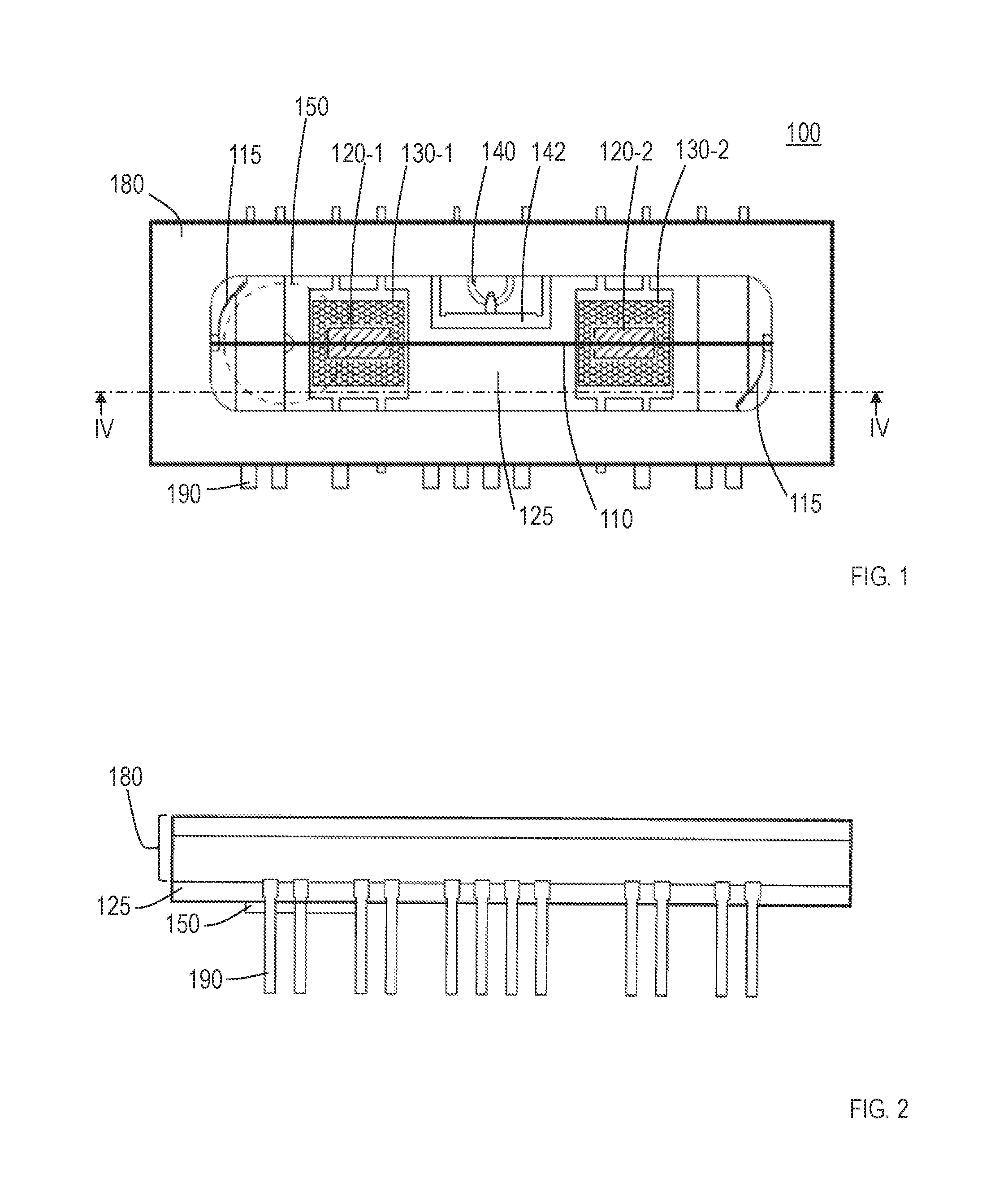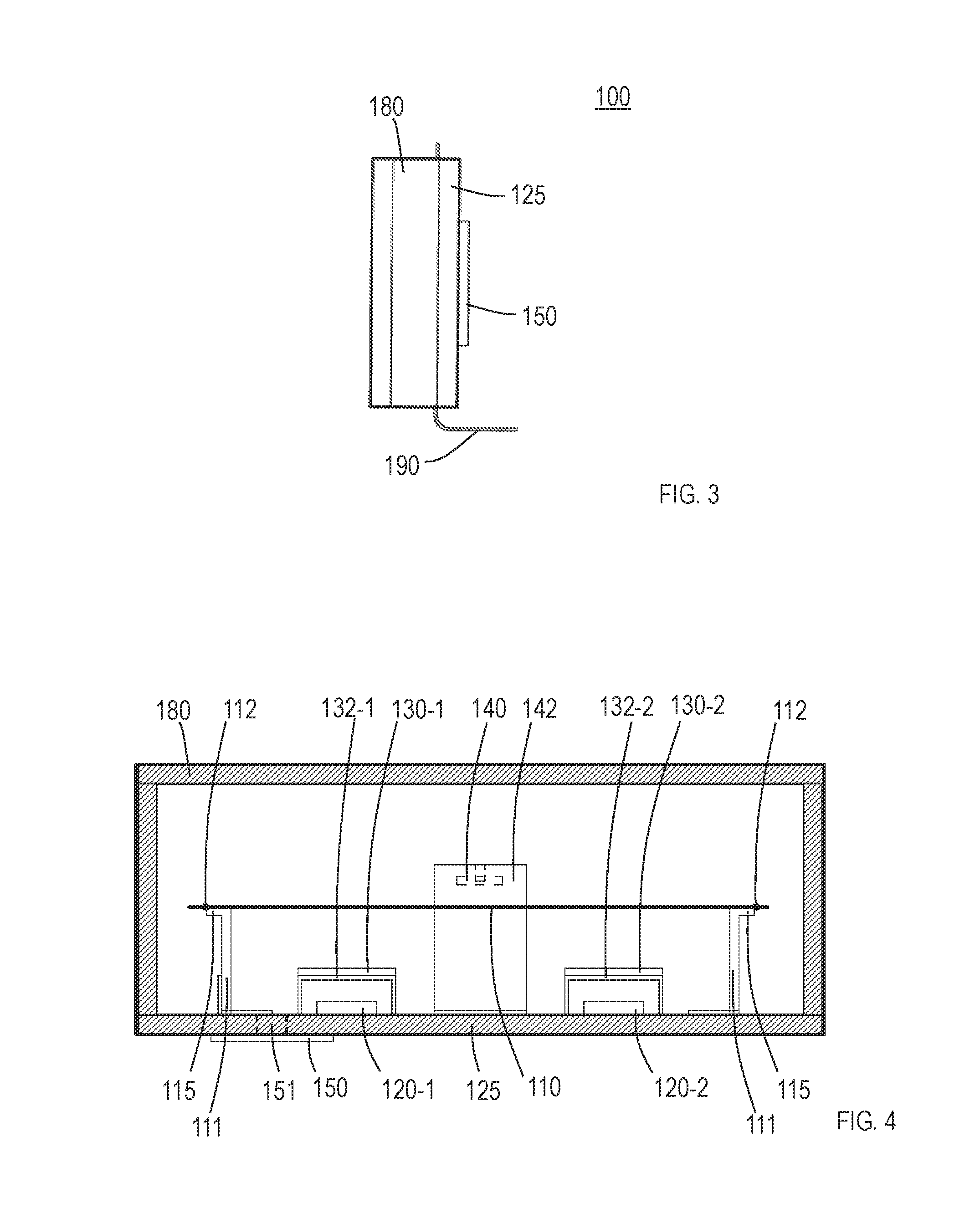Vacuum tube
a vacuum tube and tube body technology, applied in the field of vacuum tubes, can solve the problems of increasing price and difficulty in availability, reducing the quantity of vacuum tubes to be used as analog amplifiers, and not being easily used for analog amplification by vacuum fluorescent displays. , to achieve the effect of convenient us
- Summary
- Abstract
- Description
- Claims
- Application Information
AI Technical Summary
Benefits of technology
Problems solved by technology
Method used
Image
Examples
first embodiment
[0023]A plan view, front view and side view of a vacuum tube of a first embodiment are shown in FIG. 1, FIG. 2 and FIG. 3, respectively, and a cross-sectional view at a IV-IV line in FIG. 1 is shown in FIG. 4. FIG. 4 is vertically enlarged so that a structure can be easily understood. Though the ratio of vertical direction to horizontal direction is different between FIG. 2 and FIG. 4, it is actually the same. A vacuum tube 100 comprises: a filament 110 which is tensioned linearly and emits thermoelectrons at a predetermined temperature or higher, anodes 120-1, 120-2 arranged parallel to the filament 110, a grid 130-1 arranged between the filament 110 and the anode 120-1 such that the grid 130-1 faces the anode, and a grid 130-2 arranged between the filament 110 and the anode 120-2 such that the grid 130-2 faces the anode. It is a (first) feature that a distance between the filament 110 and the grids 130-1, 130-2 is between 0.2 mm and 0.6 mm, including 0.2 mm and 0.6 mm. Furthermore...
PUM
 Login to View More
Login to View More Abstract
Description
Claims
Application Information
 Login to View More
Login to View More - R&D
- Intellectual Property
- Life Sciences
- Materials
- Tech Scout
- Unparalleled Data Quality
- Higher Quality Content
- 60% Fewer Hallucinations
Browse by: Latest US Patents, China's latest patents, Technical Efficacy Thesaurus, Application Domain, Technology Topic, Popular Technical Reports.
© 2025 PatSnap. All rights reserved.Legal|Privacy policy|Modern Slavery Act Transparency Statement|Sitemap|About US| Contact US: help@patsnap.com



